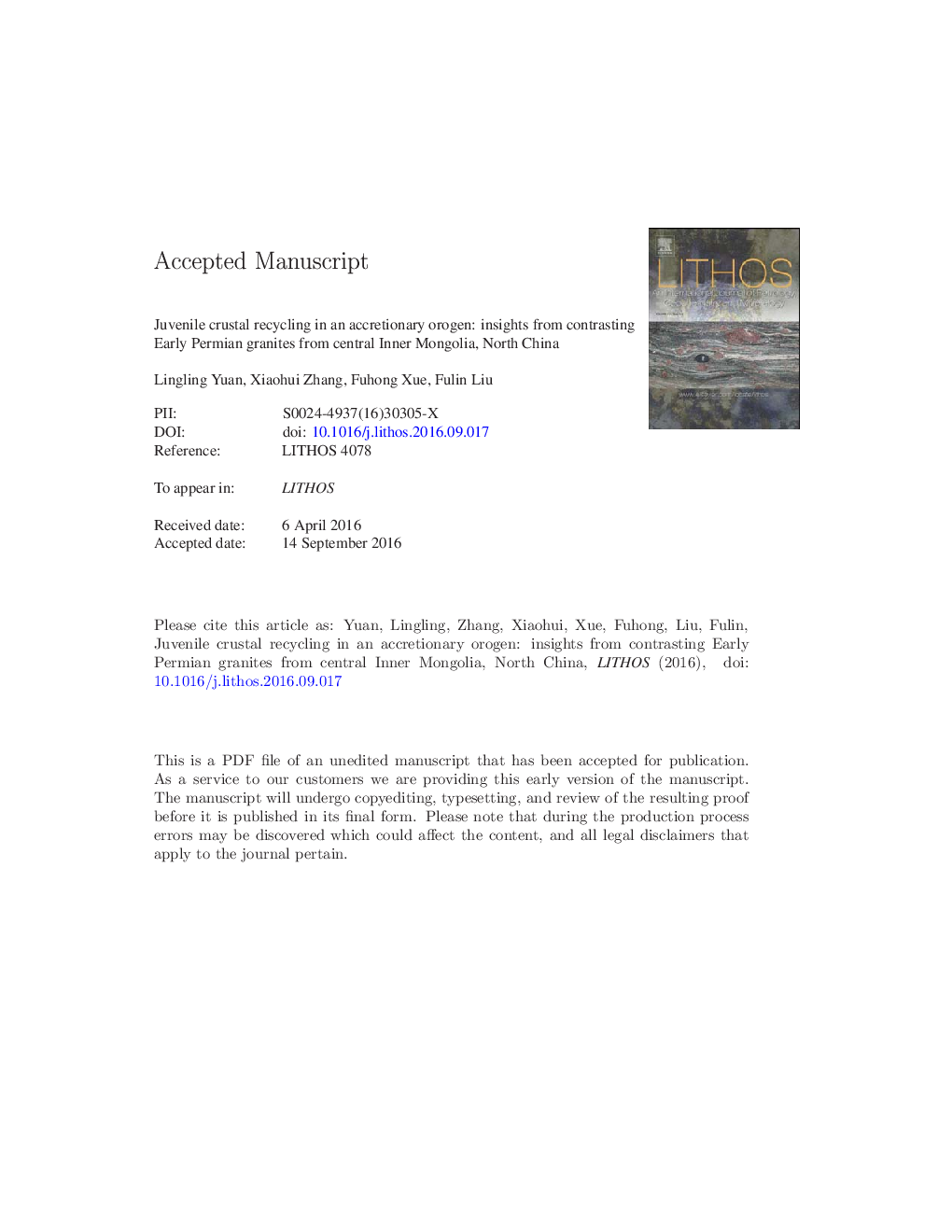| کد مقاله | کد نشریه | سال انتشار | مقاله انگلیسی | نسخه تمام متن |
|---|---|---|---|---|
| 6440293 | 1638640 | 2016 | 54 صفحه PDF | دانلود رایگان |
عنوان انگلیسی مقاله ISI
Juvenile crustal recycling in an accretionary orogen: Insights from contrasting Early Permian granites from central Inner Mongolia, North China
ترجمه فارسی عنوان
بازیافت پوسته ی جوانی در یک اورانگ اکراینی: بینش های متقابل گرانیت های اولیه پرمین از مغولستان مرکزی، شمال چین
دانلود مقاله + سفارش ترجمه
دانلود مقاله ISI انگلیسی
رایگان برای ایرانیان
کلمات کلیدی
موضوعات مرتبط
مهندسی و علوم پایه
علوم زمین و سیارات
ژئوشیمی و پترولوژی
چکیده انگلیسی
Coeval high-K calc-alkaline to alkaline granites constitute important components of post-collisional to post-orogenic igneous suites in most orogenic belts of various ages on Earth and their genesis harbors a key to ascertaining critical geodynamic controls on continental crustal formation and differentiation. This zircon U-Pb dating and geochemical study documents three contrasting Early Permian granites from Erenhot of central Inner Mongolia, eastern Central Asian Orogenic Belt (CAOB) and reveals concurrent high-K calc-alkaline to alkaline granite association derived from successive partial melting of distinct protoliths. The ca. 280 Ma Gancihuduge (GCG) pluton shows a calc-alkaline I-type character, with initial 87Sr/86Sr ratios of 0.7035 to 0.7039, εNd(t) of + 1.87 to + 4.70, zircon εHf(t) of + 8.0 to + 13.2 and δ18O from 7.4 to 8.7â°. The ca. 276 Ma Cailiwusu (CLS) pluton is magnesian and peraluminous, with initial 87Sr/86Sr ratios of 0.7036 to 0.7040, εNd(t) of + 1.9 to + 2.4, zircon εHf(t) of + 6.5 to + 12.1 and δ18O from 9.7 to 10.9â°. These features are consistent with partial melts of mixed sources composed of newly underplated meta-basaltic to -andesitic protoliths and variable supracrustal components, with distinctively higher proportion of the latter in the CLS pluton. By contrast, the ca. 279 Ma Kunduleng (KDL) suite exhibits an A-type magmatic affinity, with typical enrichment in alkalis, Ga, Zr, Nb and Y, εNd(t) of + 2.39 to + 3.55, zircon εHf(t) from + 8.3 to + 12.3 and δ18O values from 6.8 to 7.5â°. These features suggest that they stem from high-temperature fusion of dehydrated K-rich mafic to intermediate protoliths. Besides presenting a snapshot into a stratified crustal architecture in δ18O, these contrasting granites could not only serve as a temporal marker for monitoring post-collisional extension in the aftermath of a retreating subduction zone, but also present spatial magmatic proxy for tracing crustal formation and differentiation within back-arc basin environments in the CAOB.
ناشر
Database: Elsevier - ScienceDirect (ساینس دایرکت)
Journal: Lithos - Volume 264, 1 November 2016, Pages 524-539
Journal: Lithos - Volume 264, 1 November 2016, Pages 524-539
نویسندگان
Lingling Yuan, Xiaohui Zhang, Fuhong Xue, Fulin Liu,
